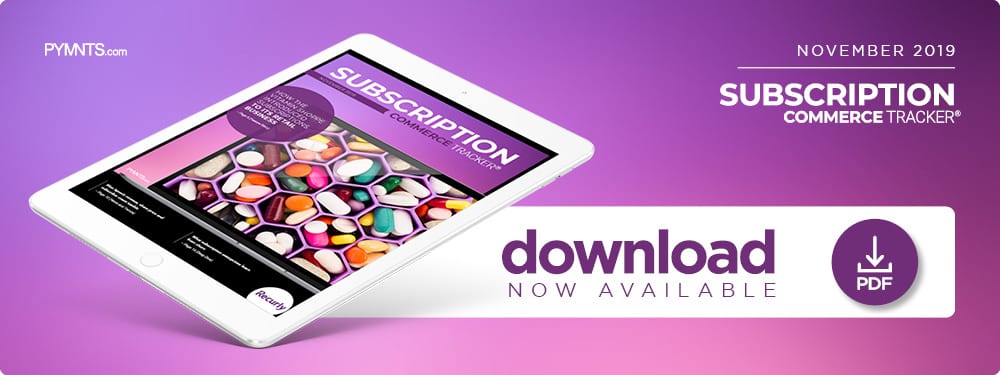
 Subscription models appeal strongly to both new and established companies for a variety of reasons. Automatic purchases mean businesses can count on a relatively steady revenue stream month to month, and make long-term decisions based on more accurate financial information.
Subscription models appeal strongly to both new and established companies for a variety of reasons. Automatic purchases mean businesses can count on a relatively steady revenue stream month to month, and make long-term decisions based on more accurate financial information.
However, a competitive market, and a finite amount of subscriber interest and funds, means that every subscription-based industry is eventually going to lose customers. This phenomenon — churn — happens for a multitude of reasons, ranging from cost-caused cancellation to consumer burnout, to uncontrollable factors like address change.
Subscription Churn Is Not Created Equal
Subscription businesses may seem to exist under a single, all-encompassing bubble, but the reality is that they face distinct challenges from each other, especially regarding churn. PYMNTS’ Subscription Commerce Conversion Index found that 26.7 percent of those who subscribe to digital media services, like Audible or Scribd, planned to unsubscribe within one year, while only 7.3 percent of those who subscribe to streaming services, such as Netflix or Hulu, said the same.
These statistics are a drop in the bucket compared to those of meal-kit subscriptions, however. One study estimated that a staggering 70 percent of Blue Apron customers unsubscribed within six months of signing up, while 80 percent of Hello Fresh customers did the same. Meal-kit subscriptions face a unique reason for churn that others do not: Customers learn to cook for themselves after a while, then do not need the help anymore.
Why Do Customers Unsubscribe?
The most common reason cited by cancelers is cost. PYMNTS’ research found that 34.4 percent of respondents planned to close their accounts because of cost, and that 29.6 percent of the digital media subscribers who planned the same said they were no longer able to afford their plans. The second-place factor — cited by 32.1 percent and 27.1 percent of streaming and digital media subscribers, respectively — is the feeling that the cost of the subscription exceeds its value.
Unsubscribing due to cost or perceived lack of value is disproportionately prevalent among younger consumers. PYMNTS’ research found that 34.2 percent of Gen Z consumers and 37 percent of millennials planned to give up digital media subscriptions within a year, compared to just 21.6 percent of those over 65. This exaggerated cancellation rate is likely due to younger customers’ lower earning power.
There are several non-pricing reasons why a subscriber might cancel. One that is commonly cited: no longer desiring the coffees of the month, geek culture paraphernalia or online video provided by the subscription. This was the primary reason for 22.1 percent of PYMNTS’ video streaming respondents. One explanation for this figure is exclusive content — such as American Vandal for Netflix or Fleabag for Amazon Prime — that incentivizes subscribers only until they have finished watching their desired series.
Other consumers who unsubscribe never intended to pay for the subscription in the first place, instead taking advantage of a free trial, and cancelling before the service charges them. This is especially common for meal-kit and streaming services, where customers want to score a few free meals or binge through a series within the trial period.
Free-trial cancellations are still less common in some markets than one might think — Netflix reported that it retains more than 90 percent past the free trial period. PYMNTS’ research backs this up: Only 12.4 percent of streaming customers and 8.9 percent of digital media customers cited the end of a free trial as a reason to unsubscribe.
Not all cancellations are intentional, though. Sometimes, customers change credit cards or addresses, and simply neglect to update their information, leading to cancellation once payments stop coming through.
How Can Subscription Businesses Take On Churn?
Subscription businesses are turning to a variety of methods to reduce cancellation rates, but all fall under one of two umbrellas: either convincing existing customers to not unsubscribe or attracting new ones to replace those who leave. Many offer discounts to those on the verge of unsubscribing, while others grant new subscribers discounted rates. Understanding which approach is ideal for a given business is crucial, as handing out more free trials is not going to help meal-kit services that typically face many cancellations after said trials.
Customers are much more likely to give honest feedback at the point of cancellation than at any other time, so cancellation surveys are a key resource. The business may succeed on a last-ditch attempt to retain the customer via a discount or special offer, but, at worst, it will gain actionable data to better counter cancellations or attract replacement customers.
Churn is inevitable for subscription businesses to some degree, but it is not necessarily a nail in the coffin to those armed with the right know-how.